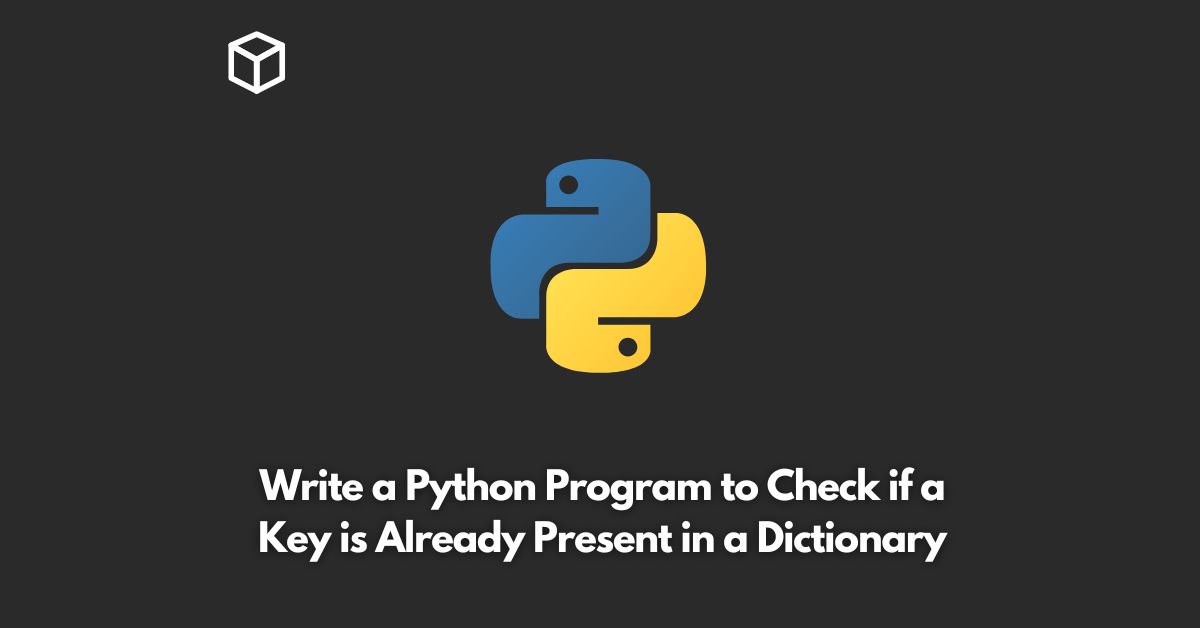As a Python programmer, you will often work with dictionaries, which are a type of data structure that allows you to store key-value pairs.
Dictionaries are useful when you need to store and retrieve data quickly, but it’s important to be able to check if a key is already present in a dictionary before you try to access it.
In this tutorial, we will discuss how to write a Python program to check if a key is already present in a dictionary.
First, let’s take a look at the syntax for defining a dictionary in Python:
my_dict = {"key1": "value1", "key2": "value2", "key3": "value3"}In this example, we have defined a dictionary with three key-value pairs.
The keys are “key1”, “key2”, and “key3”, and the corresponding values are “value1”, “value2”, and “value3”.
To check if a key is already present in a dictionary, we can use the “in” keyword.
Here’s an example:
my_dict = {"key1": "value1", "key2": "value2", "key3": "value3"}
if "key2" in my_dict:
print("Key is present in the dictionary")
else:
print("Key is not present in the dictionary")In this example, we are checking if the key “key2” is present in the dictionary “my_dict”.
If the key is present, the program will print “Key is present in the dictionary”.
If the key is not present, the program will print “Key is not present in the dictionary”.
It’s important to note that the “in” keyword only checks for the presence of a key in a dictionary, not the value associated with that key.
If you need to check for the presence of a value in a dictionary, you will need to use a different approach.
In conclusion, checking if a key is already present in a dictionary is a common task when working with dictionaries in Python.
By using the “in” keyword, you can quickly and easily check if a key is present in a dictionary.




